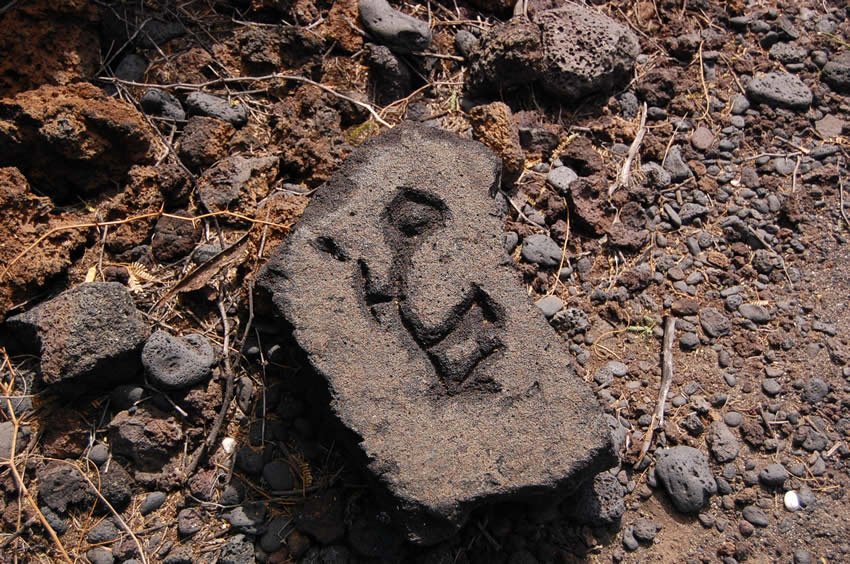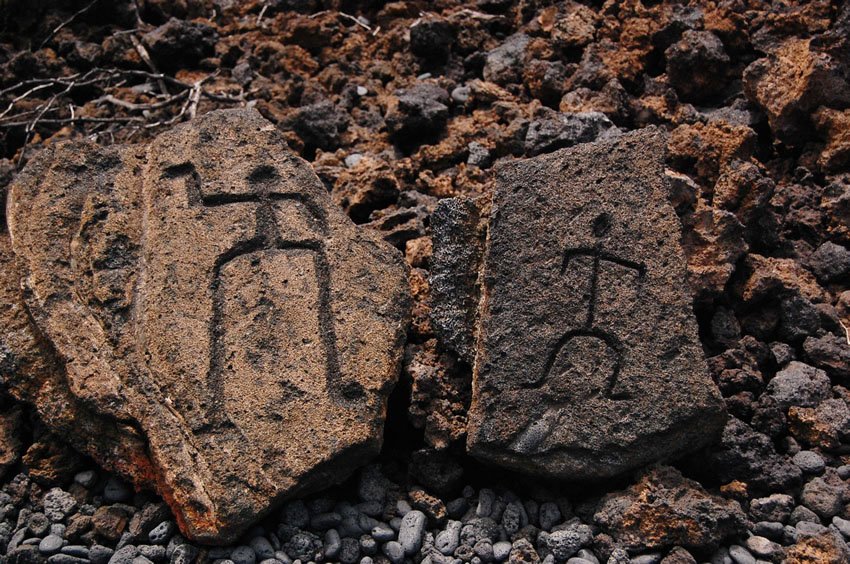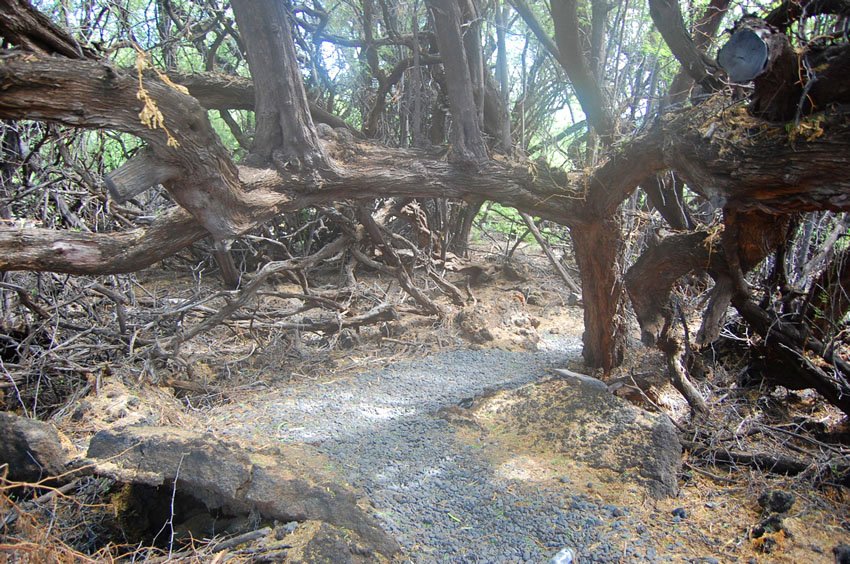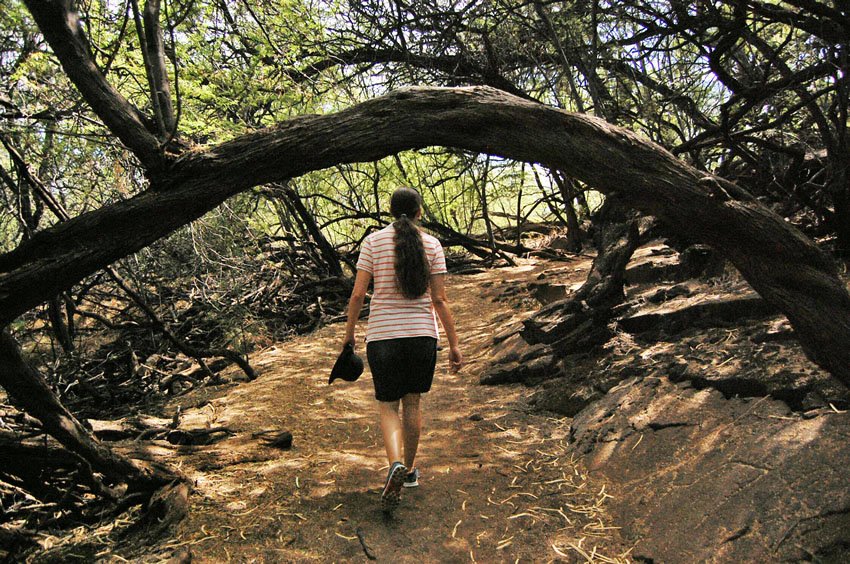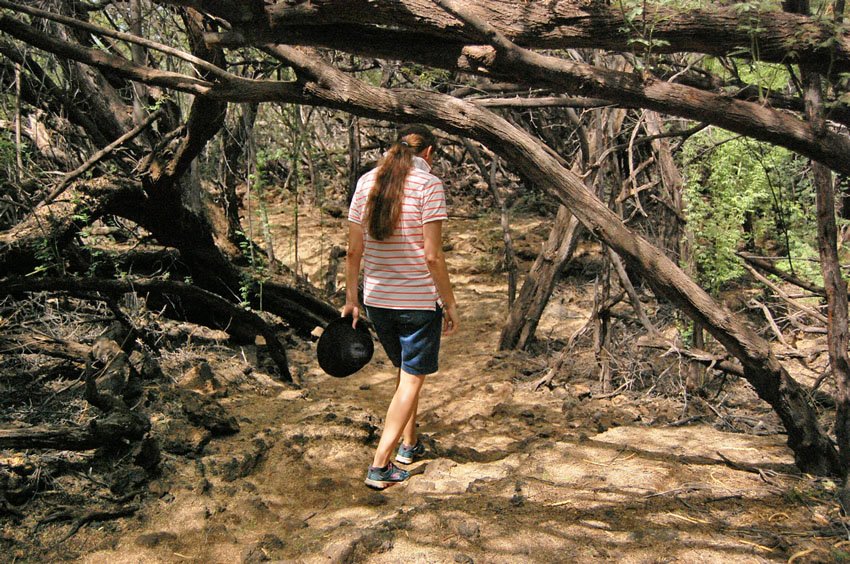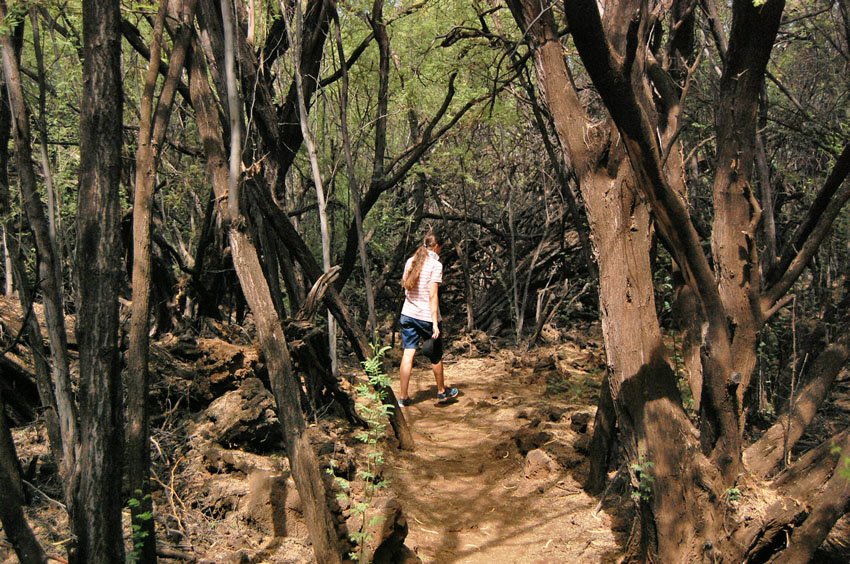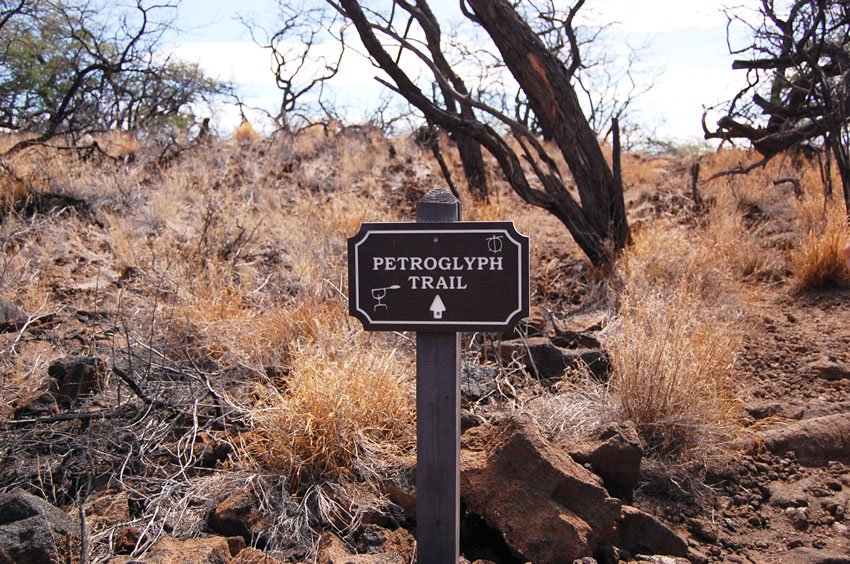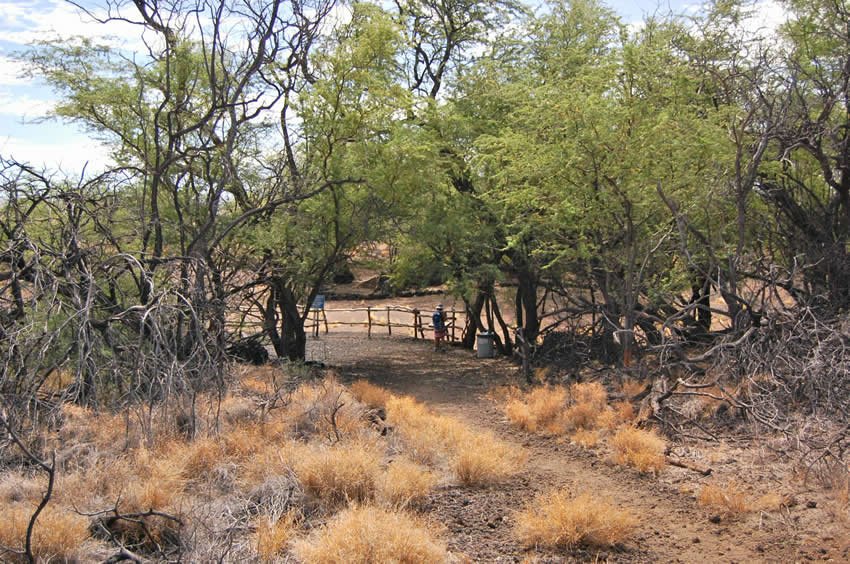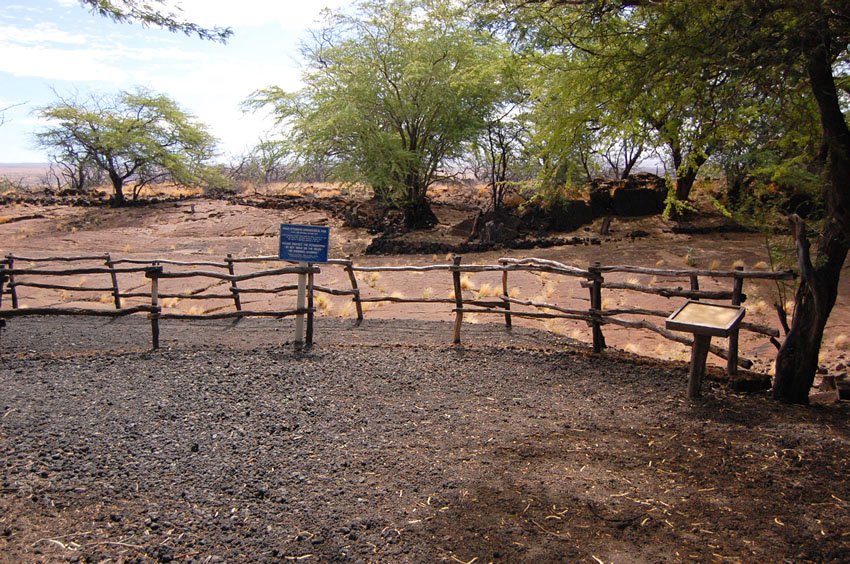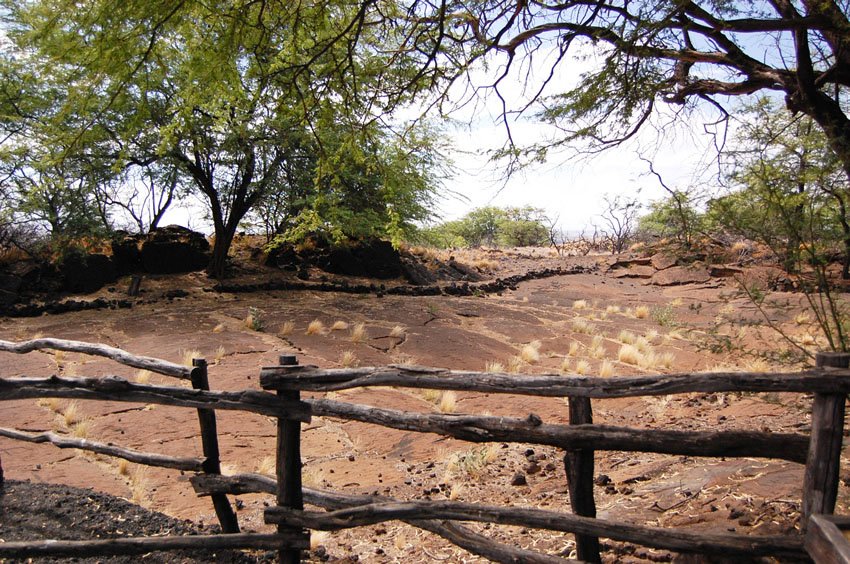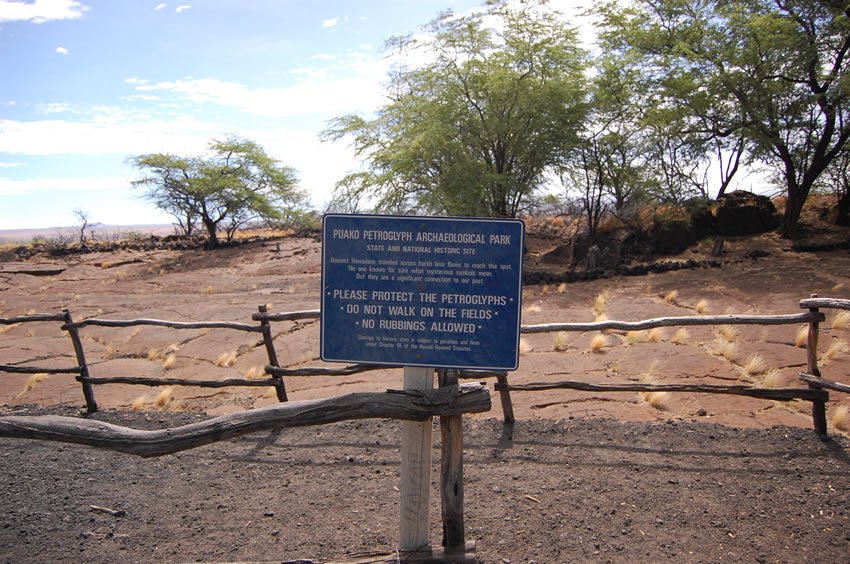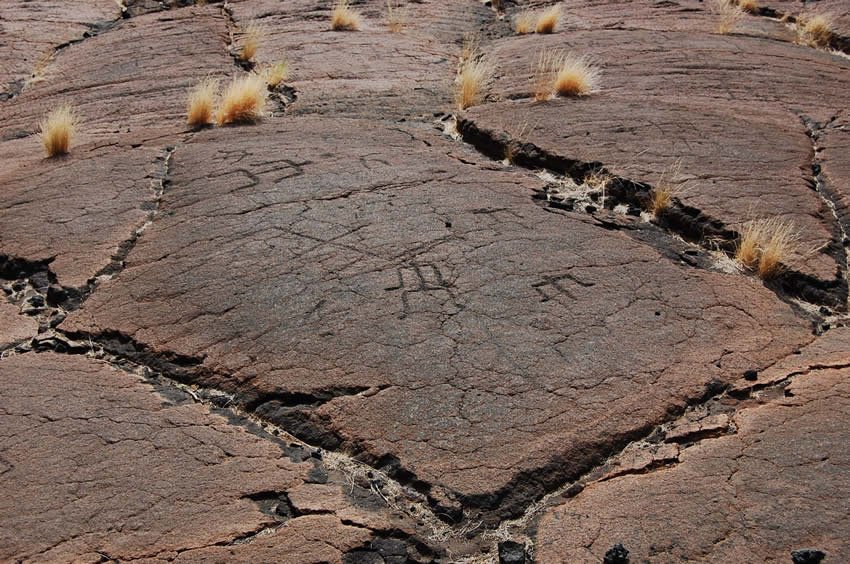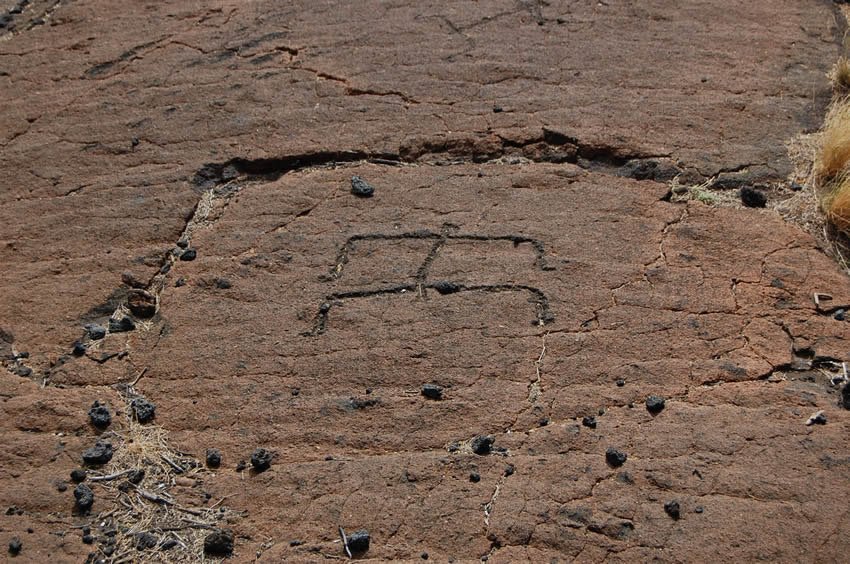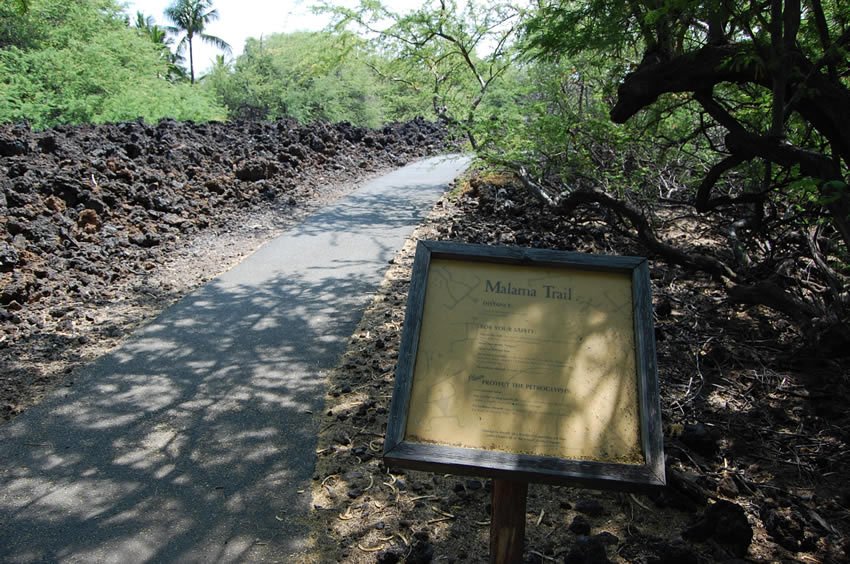Puako Petroglyph Archaeological Preserve

Puako Petroglyphs, Big Island
Located on the Big Island's Kohala Coast near (view panorama) × features more than 3,000 ancient Hawaiian rock carvings. The carvings show figures of humans, paddlers, marchers, as well as turtles, dogs, chickens and deity symbols. They are believed to have been carved between 1000 and 1800 A.D. The ancient Hawaiians called their stone art ki'i pohaku, which literally means "images in stone."
Many of the carvings are puka, which are cup marks and dots. These played a role in postbirth rituals. The piko, or umbilical cord stump, of the newborn was placed in a hole in the rock and a stone was put on top of it. It was believed that this would be beneficial for the child since this created helpful mana (spiritual energy).
Puako Petroglyphs Overview
- One of the largest petroglyph fields in Hawaii (223 acres)
- 1.5-mile (2.4 km) roundtrip Malama Trail leads to petroglyph field
- Trail to the petroglyph field is unpaved and leads through a kiawe forest (watch out for the kiawe thorns on the ground)
| |||||||||||||












